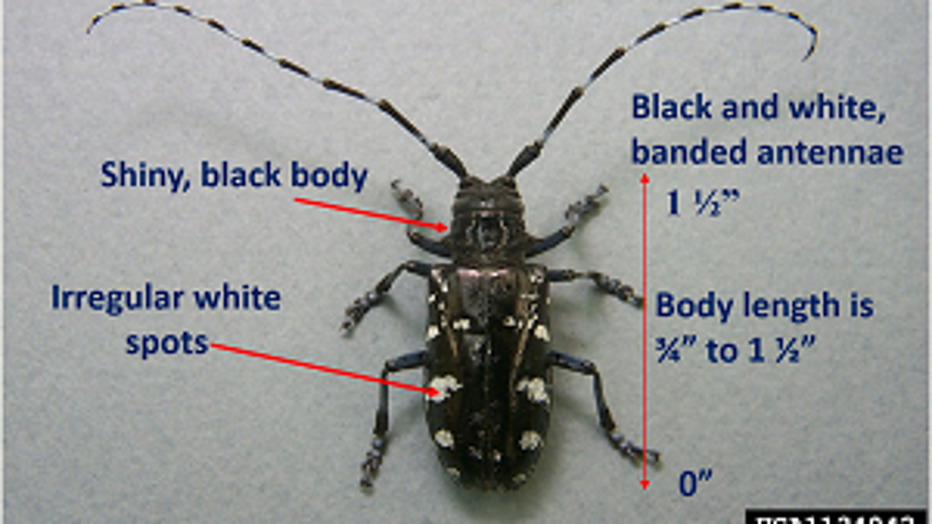Michigan DNR asks residents to be on the lookout for an invasive Asian longhorned beetle
Asian longhorned beetle. Photo courtesy: Dean Morewood, Health Canada, Bugwood.org
(FOX 2) - They're shiny, they're black, and they're spotted. Meet the Asian longhorned beetle - a non-native wood-boring beetle that poses a serious threat to our environment.
The Michigan Department of Natural Resources is encouraging residents to spend 10 minutes of their day checking the trees around their homes for this invasive species.
The Asian longhorned beetle is considered invasive because it attacks 12 types of hardwood trees, including maples, elms, horse chestnuts, birches, and willows.
While this species has not yet been found in Michigan, it is crucial to remain vigilant.
Having no natural predators, the Asian longhorned beetle is a threat to states with any of those native tree species. Infested trees eventually die after being invaded.
Identifying early signs of infestation can prevent widespread damage to Michigan's forest resources, urban landscapes, and maple syrup production.
READ NEXT: Northern Michigan jack pine the target of budworm caterpillar
Checking for signs of tree damage that may indicate the presence of Asian longhorned beetles:
- Round exit holes in tree trunks and branches, about the diameter of a pencil
- Shallow ovals or round scars in the bark where the adult beetles chewed the egg site
- Wood shavings on the ground around the tree or in the branches
- Dead branches or limbs falling from an otherwise healthy looking tree
Searching for Asian longhorned beetles:
- Adult beetles are very large, ranging from ¾ to 1 ½ inches in length (not including their antennae)
- They are shiny black with random white spots or blotches
- Their antennae have alternating black and white segments
- They have 6 legs that can either be black or partly blue
Be aware of possible lookalikes:
- The white-spotted pine sawyer has a distinctive white spot below the base of its head – between its wings – and is brownish.
- The cottonwood borer is about the same size as the Asian longhorned beetle and is also black and white, but it has a pattern of single, broad black stripes down each wing, and its antennae are all dark.
- The northeastern pine sawyer reaches up to 2 inches in length, has very long antennae and is gray in color.
- The eastern eyed click beetle has distinctive eye circles on the back of its head. It rolls over when threatened, then clicks and makes a flipping movement to get back on its feet.

Anyone that observes an Asian long horned beetle, or a tree that appears to be damaged by one, is asked to report it. If possible, capture the beetle in a jar, take photos, record the location and report it to AsianLonghornedBeetle.com or contact MDARD at 800-292-3939 or MDA-info@Michigan.gov.

